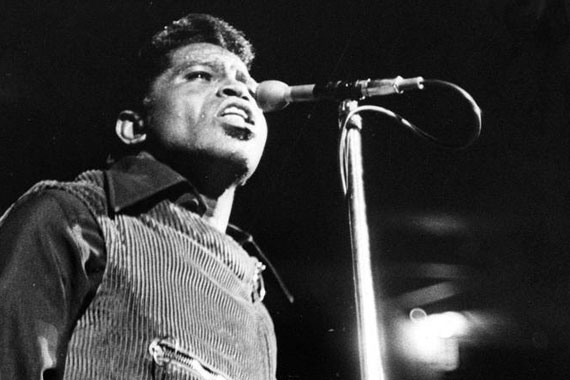Expiration Date 02.18.11
Saturday, February 26th, 2011
~JUICE~
Juice/mojo/purpose is an extremely rare quality that has a varying shelf-life for each performer that acquires it. Though it can be hard to spot, its absence is extremely easy to identify. The biggest signifier of a j/m/p void is if you ever sense that a performer regards their act as their job. You can tell when people don’t want to be somewhere and mojo always wants to be on stage.
Touching on professional athletes (who are performers) before digging deeper into the arts, j/m/p is far and away easier to recognize in sports than the arts. Concrete stats, media networks devoted to showing us every detail, and the frequency in which these performers put on a show add clarity to the concept. Few, if any, artists perform as many times a year as athletes. In one calendar year, there are 162 games + playoffs (up to 21 more games) in the MLB, 82 games + playoffs (up to 28 more games) in the NBA, and every Sunday for six months the NFL grinds out games. Whether you want to or not, you’re going to hear about who is the “Greatest at This Moment” in these sports. There is more data, exposure and accessibility to witness j/m/p in professional sports than in the arts.
That said, I am a fan of all j/m/p. Watching people perform at heights that are advanced beyond their counterparts is thrilling and inspiring. Unfortunately, it is rare and extremely time-sensitive. Even though there are millions of athletes and artists performing, an unfortunately low percentage have ever had j/m/p. And once they have it, it most likely doesn’t last longer than four years. They lose it in their old age as their talent/vision diminishes, or have difficulty finding the right personnel to help them reach their potential. Perhaps they may endure physical complications or personal troubles.
Sometimes it’ll briefly land on a musician only to be dissolved by such things as over-exposure to the soul-crushing music industry, constant travel, asshole fans/reporters, etc. So much has to go right for a tour to have that heart, energy, and unified, collective purpose. And even then, there has to be a perfect climate around your band and label in order for the j/m/p to even materialize.
Note: j/m/p is not to be confused with “swagger.” Swagger is something that politicians or salespersons have and is somehow sold in the shampoo aisle.
This search of j/m/p is the only reason why I’ll give an exhaustively fashionable kid the time of day. There’s a slight chance they know of someone who has, or is on the verge of having, this valuable yet fragile commodity.
Which brings me to Broken Social Scene, I first saw Broken Social Scene exactly one month before my 21st birthday (which was tragic for me because this meant I was 30 days shy of being able to attend their 21-and-up after-show), September 17th 2004. They played the 7:00-8:15ish block at ACL on the Friday. Mojo/juice/purpose was rampant. Critical praise of You Forgot it in People was snowballing and the band knew they were on the cusp.

Peroff (in white), Drew (below), and Canning
Kevin Drew dedicated songs to “Dick Cheney’s lesbian daughter,” Amy Millan (of Stars) powerfully sang “Anthems For a Seventeen-Year-Old Girl,” Andrew Whiteman’s voice charmingly cracked through “Looks Just Like the Sun” and I experienced Justin Peroff’s forceful drum-kit for the first time. Life was real-good. This revolving-door collective had an excitement, an idea, an incredibly optimistic outlook that we in the audience could all grasp. They had recently impressed all of the right people (mainly Pitchfork) and their fan-base was gaining momentum. They had it. The juice was theirs.
Since then, I’ve seen them nearly every year since and have been a flag-waving fan. However, last Friday I caught their show at La Zona Rosa and it was bland. Generally, the more women touring with them, the better. One woman, lackluster Lisa Lobsinger, is on the current roster. Given that their material dropped off considerably following the self-titled release (2005) and that they were clearly going through the motions on the 6-7-year-old tracks that used to be show-stoppers, it was hard to watch. Much like watching an over-the-hill athlete whose explosiveness and confidence had deteriorated, it was a woeful experience.
This cruelly time-sensitive commodity has expired on Broken Social Scene. To be honest, the j/m/p was critically injured during the tour following the release of Brendan Canning’s Something for All of Us (July 22, 2008). I saw two shows of that tour and with the addition of sub-par material as well as the absence of the violinist Julie Penner (of Do Make Say Think), the shows were flatter and lacking. Since then, they haven’t been much better and, finally, their j/m/p was DOA last week.
But it was a good run. You can’t harness mojo forever, and maybe Kevin Drew will be able revive it down the road.
The Bowery Presents Channel on YouTube is still streaming a 2-hour concert that took place on January 18th. Considering that the concert was in NYC, broadcast live, and kicked off this year’s tour, the band should’ve been amped. And though they performed better in New York than when I saw them a month later, it still sounds flat compared to the shows I experienced in past years. Their juice expired. These things happen.
Some footage of an old show I was fortunate enough to enjoy:
That was Amy Millan, Emily Haines, Lisa Lobsinger and, for a brief time, Leslie Feist on vocals. This was filmed less than six feet from where I was. The back story on this video is that BSS played on the stage opposite of the mega-main stage right before Red Hot Chili Peppers closed out the night. BSS played longer than Perry Ferrell/the organizers allotted so the powers-that-be literally pulled the plug (lights, audio, everything) on them mid-song. After a few minutes of the lawn chanting various things (“Fuck Chili Peppers!” being one of them), Flea comes out in his creepy rubber suit, starts hammering at his bass and proceeds to get bombarded with boos. RHCP played through it, and my friend and I left. It was the oddest closing to any of my memorable concert experiences.
